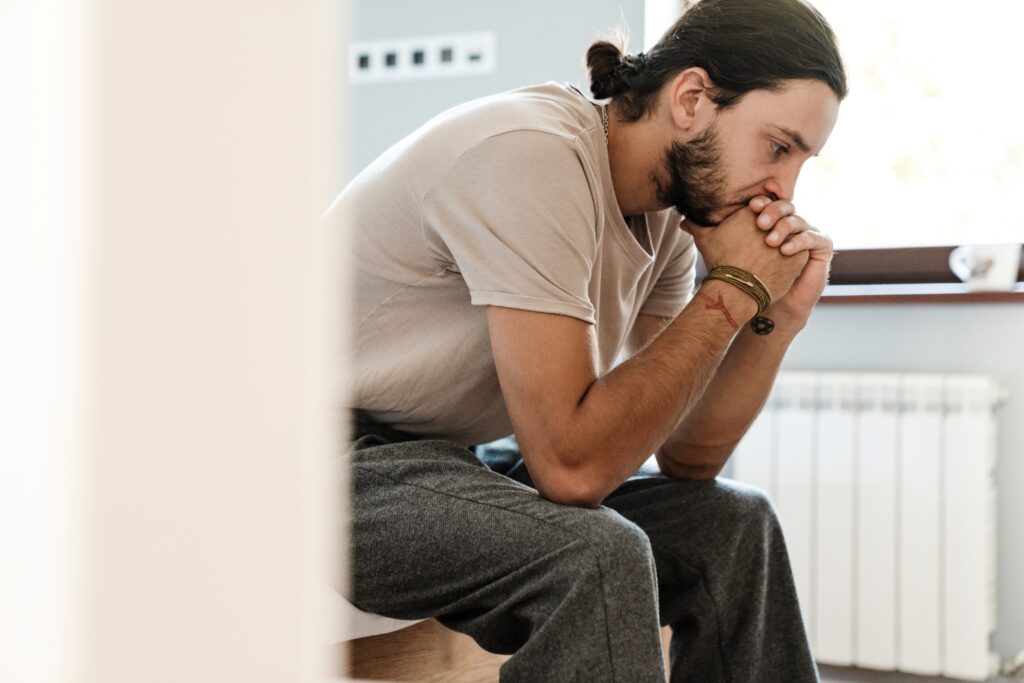Ejaculatory pain can be a distressing and confusing condition for many men. The sensation of burning, throbbing, or an unusual change in ejaculation—such as fluid dribbling rather than being forceful—can lead to discomfort and anxiety. If you’ve visited a urologist or physician and received unclear answers or ineffective treatments, it’s time to consider an often-overlooked culprit: pelvic floor dysfunction.
Let’s explore the causes of ejaculatory pain, why pelvic floor dysfunction may be involved, and what you can do to find relief.
What Is Ejaculatory Pain?
Ejaculatory pain encompasses a range of sensations, including:
- Burning or throbbing during or after ejaculation.
- Changes in the way ejaculation occurs, such as reduced force.
- Accompanying symptoms like pelvic discomfort or flu-like sensations in the pelvis.
While these symptoms can have various causes, many men report no resolution even after undergoing standard medical evaluations or treatments, such as antibiotics prescribed for suspected infections. When no infection or clear diagnosis is found, it’s worth considering whether a muscle-related issue, specifically in the pelvic floor, could be the underlying cause.
Understanding the Pelvic Floor
The pelvic floor is a group of muscles located deep within the pelvis. These muscles are responsible for essential functions, including:
- Supporting the bladder and bowel.
- Facilitating urination and defecation.
- Enhancing sexual function and pleasure.
When these muscles become dysfunctional—often by tightening or over-contracting—they can disrupt these processes, leading to symptoms like ejaculatory pain.
The Anatomy of the Pelvic Floor
The pelvic floor muscles form a hammock-like structure at the base of the pelvis. They are interconnected with other muscles in the hips, lower back, and abdomen. Any dysfunction in these surrounding areas can compound issues in the pelvic floor, amplifying symptoms.
Common problems associated with pelvic floor dysfunction include:
- Urinary urgency, frequency, or hesitation.
- Difficulty with bowel movements.
- Pain during or after ejaculation.
Why Does Pelvic Floor Dysfunction Cause Ejaculatory Pain?
During ejaculation, the pelvic floor muscles contract. If these muscles are already tight or overworked, this natural process can trigger pain. Over time, the cycle of tension and pain can intensify, making the issue chronic.
Potential Causes of Tight Pelvic Floor Muscles
Several factors can contribute to tightness or dysfunction in the pelvic floor muscles:
- Excessive sexual activity: Frequent ejaculation can overuse and strain the muscles.
- Inactivity or prolonged sitting: These habits can weaken and tighten the muscles.
- Chronic stress: Stress can lead to unconscious muscle clenching, including in the pelvic area.
- Trauma or injury: Past injuries to the pelvis, lower back, or hips may contribute to muscle tightness.
How to Recognize Pelvic Floor Dysfunction
If you suspect pelvic floor dysfunction, look for these signs:
- Pain localized in the perineum (the area between the genitals and anus).
- Difficulty starting or stopping urination.
- Pain that worsens with prolonged sitting or specific activities.
While these symptoms can overlap with other conditions, such as prostatitis, the absence of infection or inflammation often points to muscular issues.

Addressing Pelvic Floor Dysfunction
The good news is that pelvic floor dysfunction can be treated effectively. Here’s how:
Pelvic Floor Physical Therapy
A trained pelvic floor physical therapist can:
- Assess the tightness and functionality of your pelvic floor muscles.
- Use manual techniques to release tension.
- Teach exercises to strengthen and relax the pelvic floor.
Self-Guided Programs
If professional therapy isn’t accessible, self-guided programs can be highly beneficial. These programs typically include:
- Self-Evaluation: Learning how to identify tight muscles.
- Stretching and Release Techniques: Addressing not only the pelvic floor but also surrounding muscle groups like the lower back, hips, and thighs.
- Coordination Exercises: Improving muscle control to prevent over-contraction during ejaculation.
A Holistic Approach
Treating pelvic floor dysfunction often requires addressing the entire musculoskeletal system. For instance, tightness in the gluteal muscles, lower back, or thighs can contribute to pelvic floor issues. A comprehensive program will focus on releasing these areas to restore balance.
The Role of Education
Understanding your body is a critical step toward recovery. Educational resources, such as detailed guides or video tutorials, can provide insights into:
- How pelvic floor dysfunction develops.
- How to identify contributing factors in your daily habits.
- Techniques to address tightness and improve overall pelvic health.
Overcoming Anxiety and Frustration
Living with unresolved pain can lead to anxiety and feelings of hopelessness. However, understanding the role of pelvic floor dysfunction and learning how to address it can provide clarity and relief. Many men who adopt a targeted approach to treating their pelvic floor report significant improvements in their symptoms.
Next Steps
If you’re struggling with ejaculatory pain and suspect pelvic floor dysfunction, consider the following steps:
- Consult a pelvic floor physical therapist for an evaluation.
- Explore self-guided programs or resources to begin addressing the issue at home.
- Incorporate stretching, strengthening, and relaxation exercises into your daily routine.
By taking a proactive and informed approach, you can alleviate ejaculatory pain and regain control over your pelvic health.
Also Read: Is Over Masturbation Causing Your Chronic Pelvic Pain?
About:
I’m Hina Sheth. I have been treating complex orthopedics, sports and pelvic floor physical problems for over 25 years with amazing results. Now I want to bring my knowledge to the global community so I can spread my knowledge to you.
Our bodies are complex systems of 600 muscles and organs intertwined in a fascial system that all work together. Imbalances in this system such as trigger points, visceral and myofascial restrictions can lead to joint, pelvic, and organ issues.
Factors like nutrition, exercise, sleep, and stress play a crucial role. Unfortunately, our current healthcare model does not look at our bodies as a whole and oftentimes compartmentalize musculoskeletal injuries and dysfunctions.
At Rebalance, our goal is to holistically treat this complex system to restore harmony in the body. By addressing these imbalances, we help clients improve their overall health and well-being. Our vision is to empower individuals to create a healthier lifestyle for themselves.






